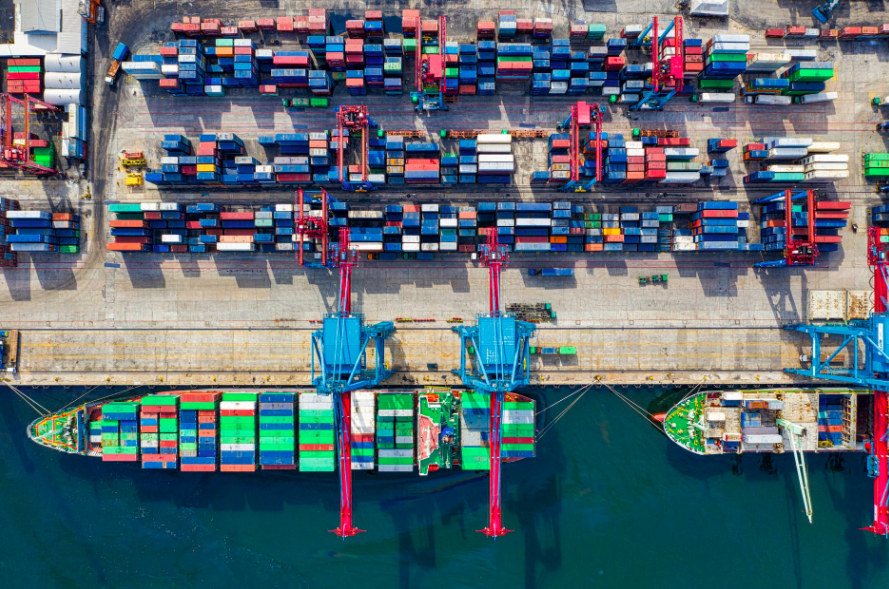People around the globe depend on access to various goods and products, from food and drink to office supplies to lifesaving medical equipment. Amid the global crisis caused by the COVID-19 pandemic, that’s truer than ever. And the shipping and logistics industry is responsible for granting that access.
Today, a consumer can order a product from a warehouse thousands of miles away, and it will arrive at his doorstep in a matter of days. That’s all thanks to the warehouse workers, pilots, ship crews, delivery drivers, postal workers, and others who put in the work to deliver each package in good condition (and in record time).
It’s also thanks to some critical advances in technology. New entrants in the shipping and logistics field are offering applications of artificial intelligence, the Internet of Things, and the cloud to help streamline the industry from the local level to the global market.
Some leaders in the industry may be wary of adopting something new, such as a tracking app or AI software. If a series of spreadsheets gets the job done, why take the risk of buying a new program or product? It might be hard for a full team to adopt, or it could suddenly stop working for 12 hours.
The answer is twofold: Any tech offering worth its salt will include ’round-the-clock support for implementation and maintenance. Worse, companies that don’t join the tech revolution will quickly find their competitors have left them in the dust.
Tech Tools in Action
Even before the COVID-19 pandemic, technology played a crucial role in transforming shipping and logistics. These three types of tech are adding value across the industry:
1. The Internet of Things
What if, instead of requiring micromanagement every step of the way, parts of the supply chain could monitor themselves? That’s what’s possible with the Internet of Things.
IoT-connected devices use sensors and programs to complete tasks, track progress, and alert supervisors if they need maintenance. They aren’t intended to fully replace human workers. They’re intended to augment and streamline the tasks in the supply chain best suited to automation.
For an example of the IoT in action, one needs look no further than Amazon. In 2012, the company bought Kiva Systems, a startup focused on robotics. Since, Amazon has added more than 30,000 automated picking robots to its distribution centers alongside employees. Other types of IoT-enabled automated vehicles, like pallet jacks, are streamlining warehouse operations.
2. Collaboration Software
Whether a company operates on land, by air, by sea, or all three, a solid connection across the entire supply chain is critical. In the past, shipping and logistics businesses relied on simple paper-based systems that made agility difficult.
But thanks to the wider availability and reliability of internet-based programs, it’s much easier for companies to add digital platforms to keep everyone on the same page.
Collaboration software Coolfire, for example, enables situational awareness throughout a company’s supply chain by aggregating data from existing systems. It also gathers information from vehicles, IoT-connected devices, sensors, and worker input — whether on the field or in the offices. When a company can view all its data in one picture, it can take proactive measures to ensure smooth operations, rather than reactive ones.
3. Artificial Intelligence
The shipping and logistics industry has always used data to drive decisions and operations, but the application of artificial intelligence has made it easier for decision makers to analyze that data, identify patterns and insights, and take action.
AI allows for stronger predictions and forecasts using powerful data analysis. It facilitates faster planning and scheduling by factoring in constraints so humans don’t have to. It can even analyze things like traffic and driving patterns to help leaders make decisions that improve public safety.
One company that’s effectively applying AI is TNX Logistics, which uses software to analyze a shipper’s available trucking loads and identify the most effective tendering strategy for those loads. Applying AI in this way helps companies reduce costs and increase efficiency throughout their supply chains.
When it comes to shipping and logistics, delivering a product to its final destination intact and on time will always be the primary goal. While each organization might have a different strategy in place to get from point A to point B, there’s no question that advances in technology will continue to streamline the process. Savvy businesses in shipping and logistics would do well to adopt these technologies if they want to remain competitive.


















